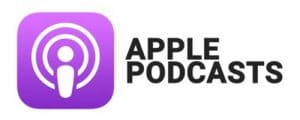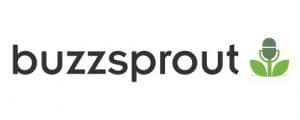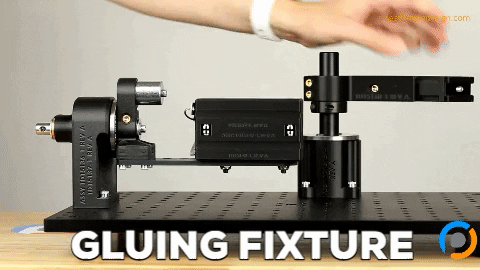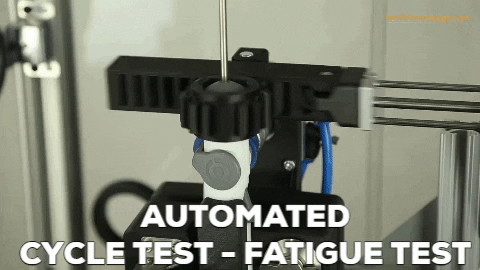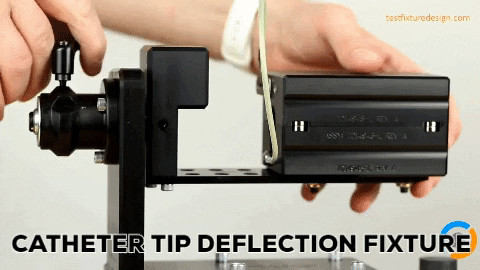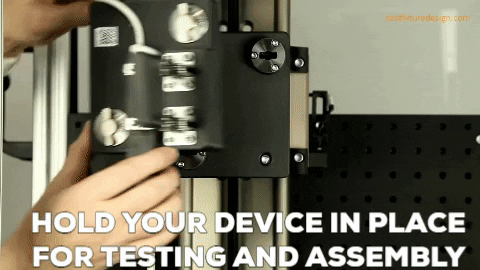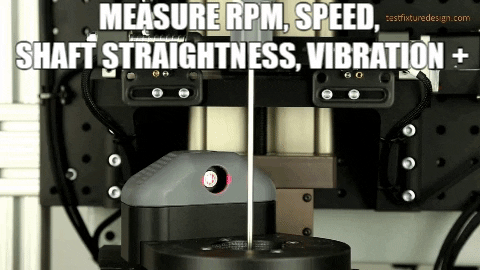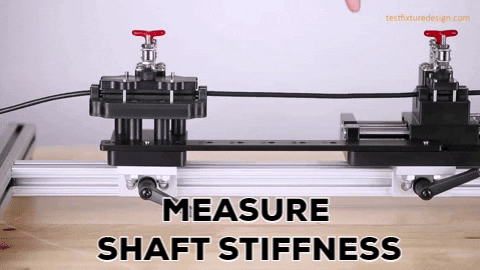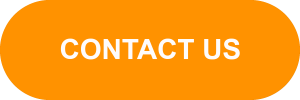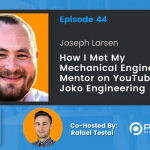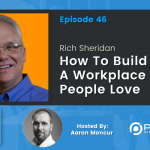Andrea Dallan | Thin Gauge Metal Profiles, Roll Forming, & Narrowing Your Scope
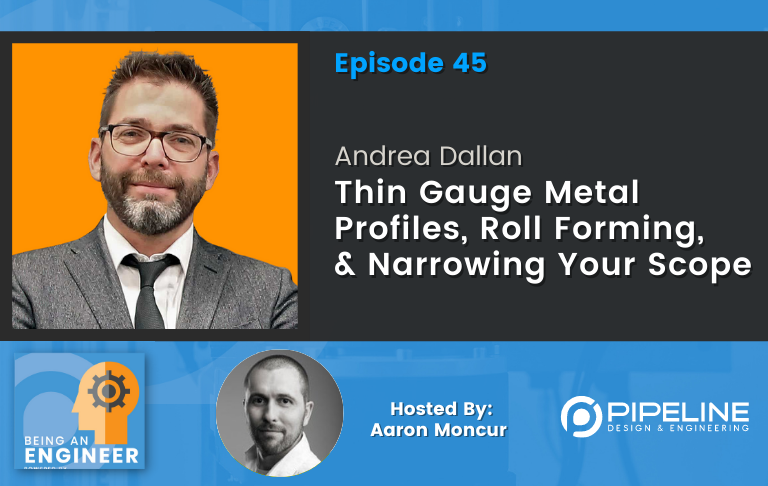
Who is Andrea Dallan?
Andrea Dallan is an engineer, an entrepreneur, and CEO of Dallan Spa, an Italian family business that has been producing systems for the processing of thin sheet metal since 1978, with 160 employees that include engineers, technicians, and operations. In addition, he is the author of the books “The Revolution of Efficiency” (2020) and “Think Thin” (coming summer 2021).
To sum up, Join our conversation to hear how he uses principles of efficiency, automation, and flexibility to increase the success of his business, and how you can apply these principles to your work, as well.
EXPAND TO VIEW EPISODE TRANSCRIPTION
SUMMARY KEYWORDS
company, machine, efficiency, customers, automation, equipment, forming, produce, book, assembly, processes, profiles, productivity, manufacturing, engineer, andrea, product, material, year, technologies
SPEAKERS
Andrea Dallan, Presenter, Aaron Moncur
Presenter 00:00
The being an engineer podcast is a repository for industry knowledge and a tool through which engineers learn about and connect with relevant companies, technologies, people, resources and opportunities. Enjoy the show.
Andrea Dallan 00:16
narrowing the scope of your company helps us start standardize the processes. But of course, we have to make sure that the market for these for this more focused solution is large enough to guarantee the work for our company and the growth for our company.
Aaron Moncur 00:49
Hello, and welcome to another episode of The being an engineer Podcast. Today we’re speaking with Andrea Dallan, who is an engineer and entrepreneur and CEO of Dallan spa, an Italian family business that has been producing systems for the processing of thin sheet metal since 1978. With 160 employees that include engineers, technicians, and operations personnel. Andrea is also the author of the books, the revolution of efficiency, and think then, So Andrea, thank you so much for joining us today on the show.
Andrea Dallan 01:27
Thank you are on point for inviting me it’s a pleasure to be here.
Aaron Moncur 01:31
You have a really interesting story about how you decided to become an engineer. Do you mind sharing it here?
Andrea Dallan 01:41
Well, yes, of course. So aren’t I, I, I was raised in, in my family and my father started his company when I was just three years old. And so I was I grew up in a, in an environment where, well, my father was very little at home, it was mainly taking care of his newborn business back then. And so I started, so getting familiar with the sheetmetal, quite early on. So well, so the first time I went to join him, the company I was just six years old, but that was just because my mother forgot to to, to pick me up at the school. So he was he had to go there and I stood with him. But that wasn’t really my, my, my real start. Where I really, really started was when I started working in high school together with him doing some assemblies. So I was I was not yet sure I was going to be an engineer, but it was very helpful to join my father and doing assemblies. In, in the company where we, he already designed and assembled machines for transforming sheet metal into ready made profiles. So metal sections. So there was there were all the technologies that we are still producing today. So punching, laser cutting laser came a little later on, and then roll forming, which was the core, the core business for the company, back then, and it is right now as well. So I started, I started working with them, then I decided when I was 22 to start, so studying engineering at the University in Padova. And doing that I kept doing spending my summers working in my father’s factory in the designing department. And then in again in the assembly, and I slowly uh, he came into the sales department, where I’m still working right now. So I think it was very natural for me to choose the career that my father because my father is also a mechanical engineer. He studied at the University in Padova. And he graduated in 1974. And the year after that I was born and so it’s a kind of a family. Family tradition we can say,
Aaron Moncur 04:53
yeah, that’s fantastic. Let’s talk a little bit about about Dallin spa what What is it that you do there? And where did the word spa come from? Because I thought originally that you guys manufactured spas, but that’s not the case.
Andrea Dallan 05:10
Well, when that when, when you wrote me that you imagined that we produce spa so that makes me think about because a spa is like when we see Corporation, it’s like it’s an Italian acronym that says This stands for like limited the company. Okay, okay. But right now I think we have to reconsider using spa all the time in our marketing so that Allah is the brand and so is our family name and is also the registered trade mark that we use for marketing our equipment in so all over the world, because we install and service our equipment in more than 80 countries and our so the machines that we produce transform a metal coils, so which is sheet metal into ready made products. And these products can be metal suspended ceilings, they can be profiles for partition walls, products for ventilation, air conditioning, racking systems, so all metal profiles that you can find a lot of uses from the automotive industry. But we are mostly specialized in thin gauge materials, and mostly in the construction, improvise for the construction business. So, Venetian blinds are rolling, rolling, shutter roller, shutter, blinds, and so on. And over time, we specialize not only in the production of the profiles, but also in the packaging of these profiles. So over time, right now, we can offer also turnkey equipment that goes from the metal coil to the product ready to be shipped to the final customer. So which is a lot of automation.
Aaron Moncur 07:18
And one of the processes that you do quite a bit is roll forming, right?
Andrea Dallan 07:21
Yes, exactly.
Aaron Moncur 07:23
Can you talk just, you know, 30 seconds or so about what what is roll forming because I imagine there’s some people listening to this that don’t really understand what roll forming is as a manufacturing process.
Andrea Dallan 07:36
As a matter of fact, sometimes I give it for granted that people should know what is right for me, but because I was
Aaron Moncur 07:42
born, it’s great that you’ve been doing that forever, I
Andrea Dallan 07:45
think that so, for bending metal, we have two main technologies. One is bending the through press brakes were so we banded the material, we’re using one tool that band makes the band in just one operation, the other technology is roll forming roll forming users role roles that progressively shape the material and through 810 20 roll forming passes we give it the desired shape. So, for example, we start from a flat strip of material and we form it into a pipe or into a square tube or well we have 1000s We have literally produced almost 10,000 Different shapes in 40 years for our customers. So basically roll forming is the right technology when we have a medium to larger productions to be made. If I have to make one profile that is always different from one another press break can be the right technology if I produced to produce millions of linear feet per year or hundreds of 1000s of linear feet per year. Well in this case rollforming is the right technologies because these machines can run at 80 feet per minute 200 feet per meter feet per minute and there are systems for 800 feet per minute so wow it’s for huge productivities that does this answer the question or gives it the okay maybe looking at some videos can be the best way to do it. But if you look to rot forming or dollar roll forming that you will find hundreds of videos showing
Aaron Moncur 09:57
it’s it’s a really cool process of For those of you who aren’t familiar with roll forming, I encourage you to go go to YouTube and type in Dallin roll forming or just roll forming, you’ll find some really neat videos about these progressive dyes that are used to, to shape the material. You mentioned that you spent your summers working for your father in his factory, and you had a lot of experience during that time with assembling machines. How did how did that experience of being an assembler help you later in your career as an engineer?
Andrea Dallan 10:36
Absolutely, I think this gives. It’s a huge help, because so if assembling a metal part is quite different than looking at the part in in a screen, and moving into managing, so if you have assembled the parts, when you design them, you take into account a lot of small things like how am I going to put these elements together? How am I going to assemble the machine? How am I going to service the machine once it is it is assembled when it has once it is at the customer side. So it gives you a lot of you understand a lot about how to assemble the machine and overtime. Also how to use the machines. Sometimes, I hope I could spend more time in that assembly department. But well, I had this great chance to work in the family business and to experience some something in each department. So I think it has been a great help about Of course, you become a great technician, a great machine assembler, if you really invest years in doing that. Bet activity. This is what I think.
Aaron Moncur 12:10
Yeah, I agree 100%. And even if you don’t make a career out of being an assembler, I mean, most engineers listening to this are not going to want to make a career out of doing assembler. To spend even a few months, you know, out there on the line doing assembly work is so valuable because you learn how things go together. And by understanding how things go together, you understand better how to design those parts. It always surprises me how long it takes to put together an assembly, especially when you’re doing it for the first time, you might look at I mean, we we do custom equipment. And so we are always putting together equipment for the first time. And I can’t tell you how many times I’ve, I’ve looked at the the model on in the CAD screen, right. And we’ve thought Yeah, it’s probably going to take us about, you know, 20 hours to do the assembly for this. And then it ends up taking twice that long, right 40 hours or, and it’s just, it’s incredible how much you learn by doing that assembly that you can take back to the design of the next piece of equipment.
Andrea Dallan 13:20
That’s right. So it’s a learning curve. And each project we develop gives us a lot of more information for the next. So it’s important from it. So knowing that you also are in special equipment in custom equipment. We understand each other very well.
Aaron Moncur 13:39
Yes, we do. Yeah. Well, you are the author of two books. Let’s talk a little bit about the first one the revolution of efficiency. What What can you tell us about that book? What, what what, what might motivate an engineer listening to this podcast to go out and buy that book and read that book? What are they going to learn reading it?
Andrea Dallan 14:07
Yes, so Oh, well, just a little bit of background. So I started writing technical articles for technical reviews back in 2001. So I had quite a lot of technical articles that were that went all around the sheet metal manufacturing sheet metal fabrication business, and I had the chance Well, at the beginning of this pandemic, I had some time for recollecting everything and putting everything together. But so, I have understood over time doing the my job in in selling custom equipment that what our customers are looking for and what people are looking for their processes is a solution and generally, this solution involves increasing the efficiency in the in their processes, which means efficiency can be in productivity. So, making more products in the same amount of time or it can be efficiency in the use of raw material. So, making the same production using less raw materials, less energy with more flexibility, that is also an aspect of efficiency, and of course, increasing the level of automation. And because, so, a lot of companies now face the problem of not finding even skilled technical personnel and so, right now, there is a great a huge demand for automating processes. So, thinking it from the perspective of the machine users, so, I framed this four main aspects of efficiency. And so, inside of this, this this book, I collected a lot of case studies from our customers that use it use the sustainability, so, the efficiency in the use of raw material to reduce the cost of their products, and therefore, they were a lot more competitive and competitive than their competitors. Sorry for that. But, so, the case studies I think, is the most important gift my customers gave to me, because that was that is real life experience, yeah, and that shows how they have faced some problems, and by reading the book, people who are in the manufacturing industries can get some hints or you know, even a small idea can give you the possibility to make huge improvements in, in your process. So, and this first book I wrote, well, of course, it is based on my experience in sheetmetal, but all of the of the aspects of the formulas that we have, that I have introduced are, can be applied to almost any manufacturing business, so, where we receive goods, so, we transform it, so, we, and then we sell a transformed the product, well, all the concepts are valuable in for for a lot of other manufacturing businesses. So, and I have a very, very good feedback on not only from my customers and the people from my industries, but also from, from from technical reviews, and editors. So, I think there is really something interesting that can be taken out from my experience. And yeah, I tried to put it in a storytelling mode. So not to make it too hard to just go through from formula to formula, but just giving it as if it was as if I was telling a story. And I hope the reading is not too hard for
Aaron Moncur 18:35
readers, I haven’t finished it yet, but I’ve read about half of it. And there’s a nice narrative that goes through it, it doesn’t read like a dry textbook. And this, I think it’s really really valuable information. Because here you have this business that you your father started and you grew as a successful business, it’s been around for quite a while now. And you’re putting the last 2025 years of your experience making manufacturing efficient into this book, you know, all that knowledge and insight in a book that we can go out and buy and and learn from so I think it’s hugely valuable thank you for for putting it together and certainly encourage people to go out and pick up that book and learn from it. Nothing like learning from real world experience, right? The textbook is one thing but reading about how someone else actually did something I think is is tremendously
Andrea Dallan 19:31
helped us. I was surprised because a lot of our customers are very jealous about their technology and what they are doing in the market. So I started asking them so would you like to would you mind sharing your experience with your production with so how? So you have made your production more efficient and they have shared? So one customer share the full sketch You will for the maintenance of his machines with incredible tips about how he uses thermal cameras to take pictures of the machine identify what if comparing the thermal camera shots from one month to the other to see if something is changing? Well, that was for me. Our ending
Aaron Moncur 20:25
pro tip Oh, yeah. That’s so cool. So all right, well, I’m going to take a very short pause here and share with the listeners that Team pipeline.us is where you can learn more about how we help medical device and other product engineering or manufacturing teams develop turnkey equipment, custom fixtures and automated machines to characterize, inspect, assemble, manufacture and perform verification testing on your devices. So we’re speaking with Andrea Dallan. Today, and he has written two books the the revenue revolution of efficiency, and and think thin, nothing thin, is it? Is it out yet? Or is it about to be released?
Andrea Dallan 21:09
Well, I’m, it is released in Italy. And well, I’m presenting it to the next fab tech show in the English translation. So I’m receiving the printed copies this week. How exciting in the company? Yeah. So I think then it is a is a slightly different book. Because so as I finished the writing, the revolution of efficiency, I had to steal a lot of information of articles that I have written for a training program that I’m making for our sales staff. And, but I’ve had the idea of rewriting it in the form of a more readable book. So it’s focused more on design for manufacturing. So we can say, How do I design one product in order to make the same function but using for example, less material? How can I use a thinner material to obtain the same resistance and the same result? How can I use pre painted coated material to get from the coil to the finished product and avoid the painting job that they need to do on the parts. And also a lot of tips on how to design some specific types of profiles, which is our which are our specialities. So I’m still so we have a copy. So we are going to publish it in with Amazon with on the Kindle Unlimited, but starting from the next year, most probably so right now, what is available is the revolution of efficiency. And if someone who is curious to get the first copies of things, then I think we should come to the fab tech show in September circuit where we will have them available.
Aaron Moncur 23:09
Fantastic. Well, I look forward to that one. So, your company Dallin incorporates a lot of automation in their processes. How have you seen the role of automation change manufacturing and where do you see automation going in the future?
Andrea Dallan 23:27
Well, it’s very interesting, because when I started working, it was 2000. And my father had just started one company as an independent company to produce the automation for packaging the profiles at the end of the roll forming lines. Over time, this automation became more and more complex and today the automation part compared to the production part of the rollformer the automation can be 75% of the investment for example, because there is a lot more technology drives motors movements that are required for for for the final packaging of the product, what I have seen is also that moving so the automation has grown a lot and it has really made the difference for Dylan compared to other manufacturers that have chosen to remain producing just the rollformer for us being able to provide the full solution until the end. So a lot of companies prefer to deal with just one company that will provide not only the production but also the packaging. The other thing that I have seen is that today when the process is studied, we have spoken on Design for Manufacturing, but there is also one design for packaging. I mean, we designed the product to in order to create, to make it easy to produce and efficient, and, and so on, but also automated packaging forces as to create schemes and schemes for the assembly for the packaging and to create a system for selling the product. So, taking the time to study one automated packaging solution helps us in also in the marketing and in making really the production a lot more efficient. The final push that we had in this final years was well, industry 4.0, which is very, so it’s one huge theme in Italy and in Europe, but the understanding is getting more and more popular also in the States. So having machines that are more and more connected, more and more automated. So these advanced production systems. And the final push was given from the pandemic, where our automated systems were the systems that could guarantee that one company could move on with their production, even though there were restrictions on going to work or in having working closely with our team with other teammates. So right now, I would say that the land would not be where we are. Now, if we didn’t have our automation department, this company that my father created was merged into the land in 2013. So right now, I think it is the number one class that we can offer to our customers, and it is one of the main reasons customers are contacting us. Does this answer your question?
Aaron Moncur 27:12
Yeah, it does. It makes a lot of sense. I mean, if your factory is automated, then it doesn’t get shut down because the operators can’t come in because of COVID. Right, you have basically robots that are running your factory. So Dylon sells capital equipment, specifically for the sheetmetal industry. How should companies think about the return on investment of purchasing capital equipment in general? I mean, if I’m, if I’m a purchasing manager out there, are there any rules of thumb that you can share, to help purchasing managers or other manufacturing or engineering teams make decisions about the value of purchasing capital equipment?
Andrea Dallan 27:57
Yes. Well, it’s one of the reasons why I wrote the first book the revolution of efficiency, so when as a an because, so, this book is really dedicated to manufacturing managers that need to understand first of all, what is the main purpose so that the main problem they wanted to solve? So do they have a problem of efficiency? Do they have a problem of automation? Do they have a problem of productivity? Or do they have a problem of flexibility these are the four dimensions of efficiency that I invited to, to investigate, because it’s, so each time that we have a problem in production, it can be from my experience, I have seen that each problem that our customers are coming to me to solve is what is the Pareto rule now, you know, so, the 80% of the effects are due to just the 20% of the causes. So, the 80% of the solution is achieved that if we understand really, what is our problem? So, our problem is it the cost of the product because of the cost of the raw material, then I need to work on producing more efficiently reducing the scrap or reducing the thickness of my materials and so on. So, it is not just the machine and that will give me the return on the investment, but really I have to understand what is the final cost of the product and the production rate that I will have an end to compare that to my present situation to understand how much cash flow the new project the new process will bring into into our company and in some cases, it is very, very straightforward, and I don’t mean, we have to do extremely complicated analysis, because once we understand the roots of our problem in the production once, so we have already the criteria to choose between different equipments to choose whether I need to do to work on the automation, or do I need to work on the productivity, but sometimes I cannot increase the productivity if I don’t increase the, the level of automation as well. So, working on these four main aspects, and, uh, well, we should, we should have a lot more time to talk about that, but it is a decision analysis problem. And so, efficiency, sustainability. So, the use of the raw material, the level of automation, how, so, what is the skill of the people, I will need to operate the machine, how many people I will need to operate the machine, these are all criteria that I can use to evaluate between different options that I have. And sometimes, we find that the best option is to continue as we are doing because there is no and the new solution would not bring enough cash flow to justify but and over time, we have understood that we have specialized in those technologies that we know for sure, that are generating an additional cash flow of hundreds of 1000s or even more per year of US dollars. So we really can offer a great value to our, to our customers. And I think this is also our job as sales people to be also consultants and to help our customers do this calculation.
Aaron Moncur 31:57
Yeah, absolutely. I want to talk a little bit more about productivity and flexibility. These are the two things that you talk about quite a bit in your book. One of the problems that we struggle with at Pipeline is how to maximize our productivity building one off or two off machines, you know, everything we do is custom. So we never have the opportunity to develop a, a really optimized assembly workflow for a particular machine built. I mean, if if we were assembling the same piece of equipment over and over, I’m sure that we we could increase our productivity in that that area by quite a bit. But to accommodate all the different equipment that we assemble. Flexibility often takes priority over maximum productivity. Yeah. Do you have any any recommendations for how companies can build manufacturing processes that result in both high productivity and flexibility?
Andrea Dallan 33:01
Well, if you’re speaking of our job, so, we also produce an engineer to order machine and they are not maybe as customer as what you are producing our pipeline. But we have, we have the same dilemma. So we are helping our customers make their processes a lot more repeatable, reliable, so we are introducing a lot of automation for our customers and our job cannot be automated as much as there’s so well, over time, we had to make a choice if we’re speaking of manufacturing, capital equipment and manufacturing custom equipment, not to work in the whole of the possible profiles that could be made out of sheet metal. So, that was one of the first thing my father did, he said he chose to focus on a very limited amount. So, thickness after two millimeters, which is theme gauges. It turned out to be very important, but it also helped us not to have too many models of machines to manage a lot of different thicknesses. And then over time, we decided with the water markets with what in what which type of profiles we wanted to focus to develop modules or machines that could be designed, tested and possibly repeated. So, when we enter one market, or when we develop a new machine, we analyze make a market analysis first and we try to find machines that can be repeated whose design can be repeated and we estimate about once per year. For the next five years, at least, if we don’t have this well, our chances to improve the process the project to improve the process are very, very limited. But nevertheless, so, it is what we try to do and there is always each each year we have three or four very special machines every year considered that we make between 50 and 70 lines plus the result all the tooling, equipment tooling that we are selling, so, but we are managing overall 150 160 projects per year and in this 150 160 5060 are the the the lines that we that we produce. And so, there is always we are trying to standardize as much as possible, because without standardization, we cannot create efficiency for ourselves. But there is always a balancing act here because the advantages that most companies like you and us have is we have a design department, we can develop a custom solution for our our, for each customer, each company is different, it is a huge advantage. It also we have to deliver, we have also to understand that we are delivering a unique value to these companies. So building efficiency if everything is a new machine that we have to test every time and a new proper process is remains extremely complicated, but also gives us a huge advantage because not all the companies are capable of the know how that you have a pipeline. Yeah, I think
Aaron Moncur 37:02
productivity elite, at least maximum productivity and flexibility are almost opposing requirements. To a certain extent. Very
Andrea Dallan 37:11
good point. That’s a very, very good point.
Aaron Moncur 37:13
Yeah. And it’s, I hear what you’re saying, right you have starting with your father and continuing now with you and your team, you have made the intentional decision to focus to narrow the scope of what you do. So you’re not trying to please everyone, you have this this narrow scope that you do really, really well. You’re not trying to do everything really well, that I think is kind of impossible, right? Either you do one or two things really, really well. Or you do a lot of things just kind of okay, mediocre. So So that’s right. So that
Andrea Dallan 37:46
one Oh, go ahead. Go ahead.
Aaron Moncur 37:49
I was just about done with with my my rant here. But I think there’s, there’s only so far you can go to accommodate both maximum productivity and flexibility. And maybe really the answer is you don’t accommodate them both because they are almost opposing requirements, you you narrow your scope, and you get really good at one thing to maximize productivity.
Andrea Dallan 38:14
Exactly. Well, this is what my my father did in 1984 1986, narrowing the scope, then we did it even more. There is one author allerease. In the US, he wrote a book that the name is of the book is focused. And he speaks about it’s a book, basically on marketing. But he the concepts are very, very interesting. And it’s the favorite book for my father. So narrowing the scope of your company helps us standardize the processes. But of course, we have to make sure that the market for these for this more focused solution is large enough to guarantee the work for our company and the growth for our company.
Aaron Moncur 39:09
Absolutely, yeah. Well said. All right. Well, I think we’ll we’ll wrap things up here in just a minute. Before we do is is there anything that we haven’t talked about that you think we should?
Andrea Dallan 39:25
Well, I think we we pretty much covered all the main points I wanted to bring on the table here. All right, thank you very much.
Aaron Moncur 39:33
Oh, you’re so welcome. Andrea, how can people get a hold of you if they want to learn more about your books or your company or just get in touch with you? What’s a good way?
Andrea Dallan 39:44
Well, the best way is to contact me using LinkedIn. Just type Andrea dalam with 12 and, or they can come to our website darlin.com We are started thing in September, also with the podcast in Italian and English, where we are reading, I’m reading actually the books one by one. So if somebody like likes the podcast, we will start the end of September with that. So, and one other thing that we started doing that during the pandemic that might be very interesting, if someone wants to go more to understand more the roll forming processes is the master classes. So, we are, we have started presenting our machines live. So when the machine is ready here for before the shipment, we give it a we give a tour of the of the facility of the machine, we show how it is working all the different steps of the production of the packaging. And it has become a very, very successful tool because we have in each masterclass people that are joining from South America from North America, Europe. Taiwan, else, it’s incredible. Australia and they connect at the same time. It’s like having people here and showing them the facility. So it’s, and people give us a lot of very good feedback on that. Because it’s like, you know, that program in, in the USA, how it’s made. Yeah, yeah, yeah. So we just like that. Okay. Yeah, we are showing how metal profiles are made and how these technologies work. And well, we’re having a lot of fun in doing that as well.
Aaron Moncur 41:36
I love that you’re doing that. That’s so cool. I mean, that’s my idea of a fun vacation is going into a factory and seeing how things are being manufactured.
Andrea Dallan 41:44
Well, I’d send you the link to to join the master classes that are on if you want, please
Aaron Moncur 41:49
do Yeah, absolutely. All right. Well, Andrea, thank you so much for spending some time with me today. I really appreciate all the the examples and insight and wisdom that you’ve shared.
Andrea Dallan 42:02
Thank you very much. It’s been a real pleasure and well. Hope to see you soon again.
Aaron Moncur 42:12
I’m Aaron Moncur, founder of pipeline design, and engineering. If you liked what you heard today, please share the episode. To learn how your team can leverage our team’s expertise developing turnkey equipment, custom fixtures and automated machines and with product design, visit us at Teampipeline.us. Thanks for listening.
About Being An Engineer
The Being An Engineer podcast is brought to you by Pipeline Design & Engineering. Pipeline partners with medical & other device engineering teams who need turnkey equipment such as cycle test machines, custom test fixtures, automation equipment, assembly jigs, inspection stations and more. You can find us on the web at www.teampipeline.us.
Help us rank as the #1 engineering podcast on Apple and Spotify by leaving a review for us.
You can find us under the category: mechanical engineering podcast on Apple Podcasts.
Being an Engineer podcast is a go-to resource and podcast for engineering students on Spotify, too.
Aaron Moncur and Rafael Testai love hearing from their listeners, so feel free to email us, connect on Facebook, Twitter, Instagram, and subscribe on Apple Podcast and Spotify!
You’ve read this far! Therefore, it’s time to turn your headphones up and listen now to this episode to learn all these. Don’t forget to tell your friends who might like this too!

